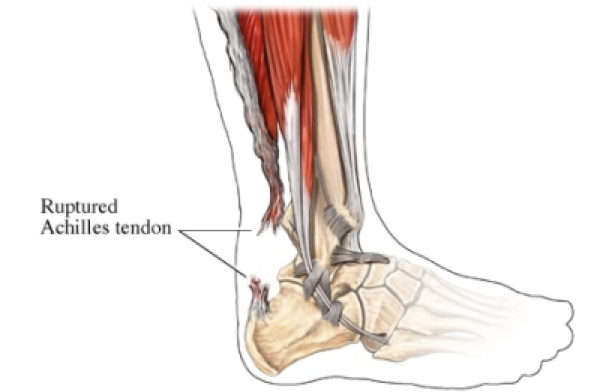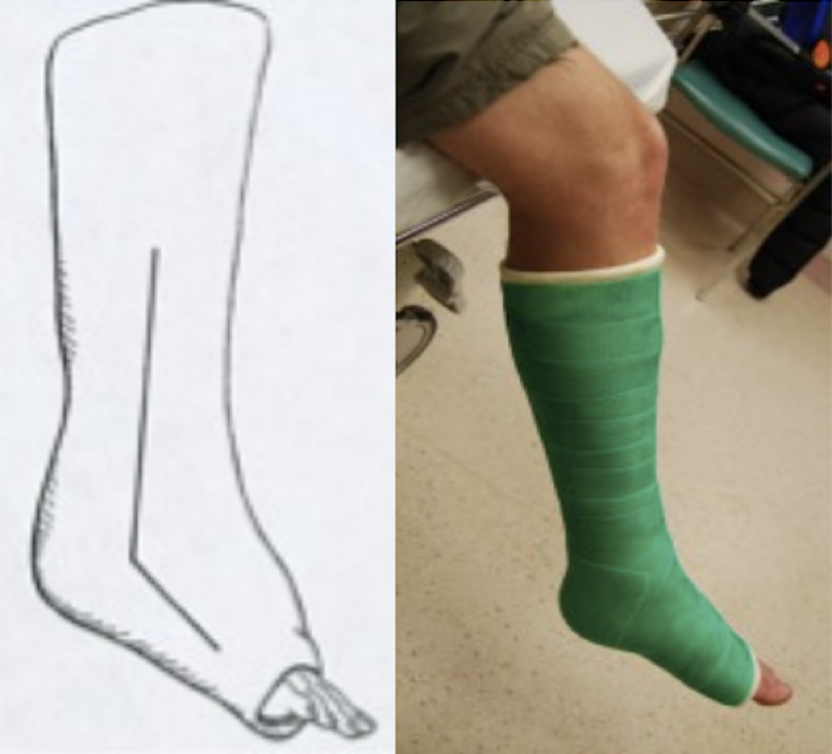
Achilles tendon is the strong fibrous band that connects the muscles at the back of your leg with the heel bone.
This tendon helps to generate the force needed for walking, running, and climbing stairs. Tendon ruptures usually occur between 30-60 yrs of age but can occur
at any age. The usual site of rupture is 2-6 cms above the heel bone.
Risk factors for rupture include poor conditioning of the tendon for sports, use of steroids (oral or injection into the tendon), use of fluoroquinolone antibiotics
(ciprofloxacin, levofloxacin, etc) or a previous contralateral heel cord rupture. Pre-existing diseases like Inflammatory arthritis (rheumatoid arthritis, gout, SLE),
endocrine disorders (renal failure, hyperthyroidism), infections or tumour can also lead to rupture.
The symptoms of an acute rupture include a sharp pain at the back of the lower leg, swelling and ecchymosis in the area and difficulty in walking. The victim may remember
an audible pop or snap on the onset of symptoms.
X rays, ultrasound and MRI are the most common investigations ordered to diagnose the tear and the condition of the remaining tendon, with MRI being the best imaging
modality.
There are two options for treatment of an Achilles tendon tear-Non surgical and surgical.
Non surgical treatment involves treatment in a short leg cast with the foot in downward flexed position for 6-8 weeks. Walking is allowed after cast removal with a
heel wedge which is gradually decreased to bring the heel down. This is followed by physiotherapy. Cast treatment is usually chosen for older patients with less
active lifestyle with or without associated risk factors for surgery and healing like peripheral vascular disease or diabetes. The nonsurgical treatment has a
higher risk of re-rupture (upto 40 %) and prolonged period of casting and associated muscle wasting and ankle stiffness.

Plaster treatment of achilles tendon rupture
For a young active individual or athlete, surgery is the treatment of choice. The achilles tendon is repaired or reconstructed with an adjacent tendon with an open or percutaneous method depending on the tear and quality of residual tendon. The advantages of the surgical repair are a lower re-rupture rate (0-5%) and faster period of rehabilitation and muscle strengthening.


